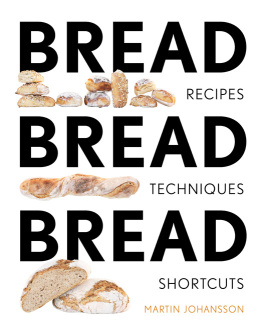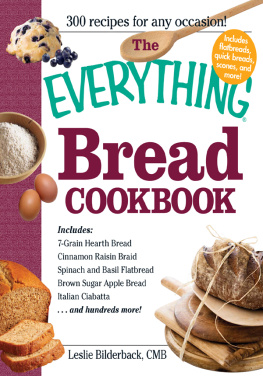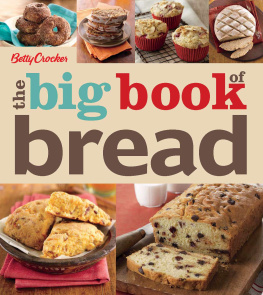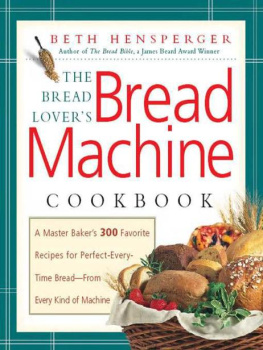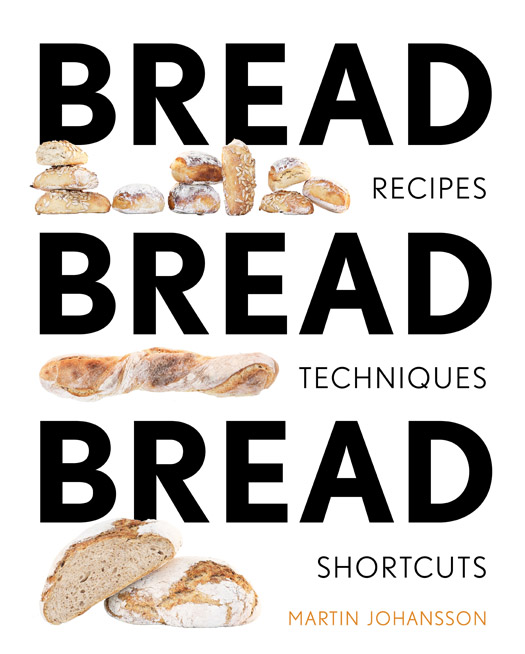There was a time when I declined pleasant dinner invitations because I had some dough that had to be dealt with at home. Simply put, the dough had more control over me than I had over it. I baked all the time, and everything I baked was sourdough. It could take five days to bake a pan of cinnamon buns. Additionally, it happened all too frequently that the bread was ready at two in the morning. Because of all that, Ive since done everything possible to simplify the baking process so it would fit into my daytime schedule. In the work for this book, I have again baked a huge number of classic breads and tried to make them as simple as possible. For example, I have eliminated kneading altogether. Among the recipes, youll find quick, slow, hard, soft, sour, and sweet breadsand everything made by the easiest possible method. The breads are all goodfantastically good, actually.
MARTINS TIPS AND SHORTCUTS
There are many ways to bake bread, and depending on whom you ask, you will receive different answers about how to proceed and what is important. Heres what I think.
You dont need to dissolve the yeast in water before you blend in the rest of the ingredients; it will dissolve in any case.
You dont need to use lukewarm water; cold water is fine. (When you are baking with sourdough, sometimes it helps to have slightly warmer water; .)
You dont need a stand mixer (but you can certainly use it if you have one).
You dont have to knead the dough.
Dont worry about any drafts from an open window. In fact, in the summer, a slight breeze is advantageous so the room wont be too warm while the dough rises. Its a good idea, though, to cover the dough so it doesnt dry out.
The warmer the room, the more quickly the dough will rise. If you want to speed up the dough rising, you can use slightly warmer water (up to 104F/40C) in the dough, or set the dough to rise in a warmer place (6877F/2025C). If, on the other hand, you want to slow down the rising, you can let the dough rise in a cooler place, like the basement or the refrigerator.
Whenever you need to, you can slow down the rising process by refrigerating the dough. It will continue to rise there, but it will rise very slowly. Another way to slow things down is to punch the dough down and let it rise again. Extending the time for the rising in various ways makes the bread even better.
It is difficult to say precisely when dough has risen enough. If the dough feels tight and rather firm, you should let it rise a little longer. When the dough begins to feel airy, almost porous, I put it in the oven. Test the dough by gently poking it: It should leave a little indentation that doesnt bounce back immediately.
You can never totally depend on the rising times given in a recipe. How well or quickly a dough rises completely depends on the room temperature. A dough that rises in an hour in the summer may take twice as long on a cold winter day.
Dont depend entirely on the baking times given in a recipe. Go by what you see and how a loaf feels. If you want to be sure, use a thermometer. Dark bread is ready at 208F (98C) and light bread at about 205F (96C).
Dont throw away crusts or stale bread. There are many ways to use up leftover bread. The easiest is to cube the bread, put it in a bag, and freeze it. Toasted in olive oil, it makes great croutons for soups or salads. French toast is another classic: whisk together egg and milk, dip the bread in it and cook in a well-buttered frying pan.
Dont be disappointed if the bread doesnt look exactly like the photos. It doesnt when I bake, either.
EQUIPMENT YOULL NEED FOR BAKING

A MIXING BOWL THAT HOLDS AT LEAST 4 QUARTS (1 GAL/41)
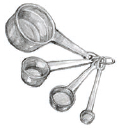
MEASURING CUPS AND SPOONS
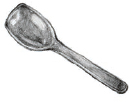
A MIXING SPOON OR SPATULA
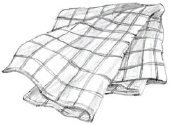
A KITCHEN TOWEL TO BE USED ONLY FOR BAKING
AN OVEN
EQUIPMENT YOU DONT NEED BUT WHICH MAKES BAKING MORE FUN
A DIGITAL SCALE minimizes dishwashing and makes baking more precise, faster, simpler, and more fun.
A DUTCH OVEN TO BAKE IN makes a moist dough rise higher for a nice finished loaf ().
RYE FLOUR (light, medium, and dark) ALL-PURPOSE FLOUR SPELT FLOUR (whole-grain and white) SALT (preferably sea salt) gives bread and pizzas more character and produces crisper rusks.
GOOD TO HAVE IN THE PANTRY
RYE FLOUR (light, medium, and dark)
ALL-PURPOSE FLOUR
SPELT FLOUR (whole-grain and white)
SALT (perferably sea salt)
ACTIVE DRY YEAST
BAKING POWDER
BAKING SODA
SOURDOUGH STARTER
HONEY
SEEDS (sunflower, pumkin, sesame, etc.)
BUTTER
SUGAR
WHAT YOU NEED TO KNOW ABOUT THE RECIPES
The recipes in this book are generally calculated to make one or two loaves but can easily be doubled or halved. The recipes in the sourdough chapter make larger loaves than the other recipeswhen you are working with sourdough, you might as well go all out. In addition, sourdough bread lasts longer than yeasted bread.
BY THE WAY
THE RECIPES
There is really no hocus-pocus in the recipes in this book, and there is no reason at all to follow them blindly. If, for example, you think that the recipe for a loaf with whole-grain spelt flour would be better as a baguette, then make baguettes. If you think that a bread is a little too light, add some whole-grain flour to the dough (up to half of the amount of all-purpose or bread flour can usually be substituted by whole-grain flour without affecting the proportions appreciably). As another variation, you can make rolls with half of the dough and make a loaf with the rest: rolls for breakfast, a little loaf for lunch.
Anyone who leafs or bakes through the sections of this book will soon notice that I use very simple methods. For example, as a rule I use teaspoon (.05 oz/1 g) active dry yeast for breads that will rise overnight, and 1 package, or 2 teaspoons ( oz/7 g), active dry yeast for bread that needs to rise more quickly. You can experiment with this and take the ingredients for a quick-rising bread, decrease the yeast, and make it as a slow-rising bread instead. You can, for example, let the rise overnight. The results will not be identical to the quick-rising version, but the bread will be good in another way, and thats really what counts.
LOAVES
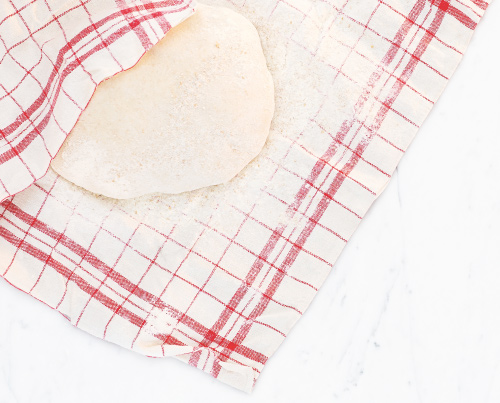
Don't be stingy when flouring a towel, especially the first time you use it.

